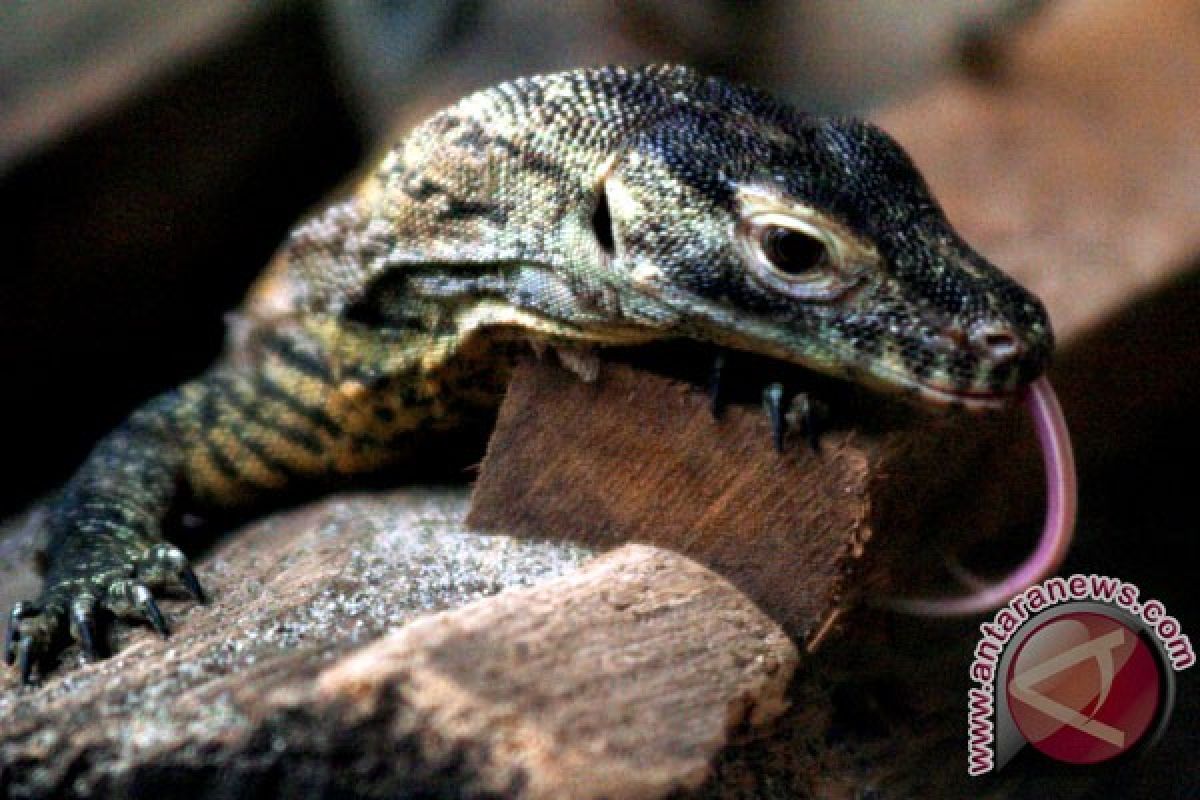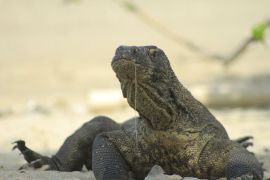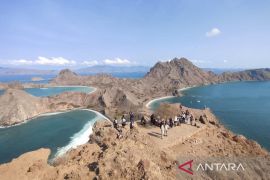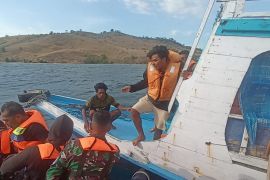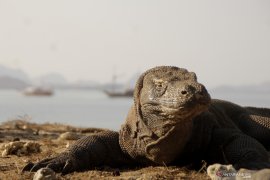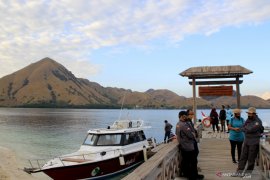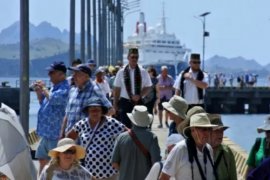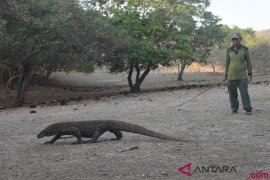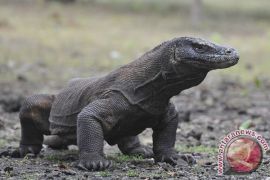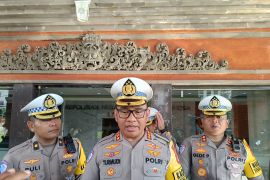In 1977, the Komodo National Park was declared a biosphere reserve by the United Nations Educational, Scientific and Cultural Organization (UNESCO). In 1991, UNESCO named the Komodo Island, which has a population of around 3 thousand komodo dragons, a World Heritage Site.
Thereafter, the park was declared one of the New7Wonders of Nature, in May 2012, and officially inaugurated later, in September 2013, by the New7Wonders Foundation.
Since then, there has been a steady rise in the number of foreign tourists visiting the national park to obtain first-hand information about its most remarkable inhabitant, the giant lizard, found nowhere else on earth.
Over the weekend, Komodo National Park Management Spokesman Sustyo Iriyono stated in the Manggarai Barat district town of Labuan Bajo, that thousands of tourists have frequented the park.
"More than 60 thousand tourists from 104 countries visited the Komodo Biosphere Reserve and National Park from January to December 2013, thus showing an increase of 10 thousand, from 50 thousand tourists during the same period last year," Sustyo claimed.
Tourists from the United States, Russia, Germany, Italy, South Korea, and several other countries visited the national park, according to Sustyo.
Established in 1980, as one of 50 national parks in Indonesia, the Komodo National Park was declared a World Heritage Site and a Man and Biosphere Reserve by UNESCO in 1991.
Sustyo stated that the park was initially established to conserve the unique Komodo dragon (Varanus komodoensis), but, since then, the conservational goals have been expanded in an endeavor to protect the areas biodiversity, both marine and terrestrial.
The Komodo Biosphere Reserve and National Park is famous for its population of some 5 thousand komodo dragons, and are of great interest to scientists involved in the research on the theory of evolution.
This giant lizard was also the key reason for the national park being designated as a World Heritage Site.
Sustyo further added that the park can become a profitable venture in the future, if the price of entry tickets was increased from its current Rp2 thousand for domestic tourists and Rp20 thousand for foreign tourists.
Located between the islands of Sumbawa and Flores, the Komodo National Park comprises three major islands: Rinca, Komodo, and Padar, and numerous smaller ones, all of which have a volcanic origin.
Located at the juncture of the two continental plates, this national park constitutes the "shatter belt" within the Wallacea biogeographical region, between the Australian and Sunda ecosystems.
The property is identified as a global conservation priority area, comprising unparalleled terrestrial and marine ecosystems and covering a total area of 219,322 ha.
The arid climate has triggered specific evolutionary adaptations within the terrestrial flora, ranging from the open grass-woodland savanna to the tropical deciduous (monsoon) forest, and the quasi cloud forest.
The rugged hillsides and dry vegetation highly contrast with the sandy beaches and the blue coral-rich waters.
Commonly known as Komodo Dragon, due to its appearance and aggressive behavior, the Komodo Lizard, is the largest living species of lizard, growing to an average length of 2 to 3 meters.
The species is the last representative of a relic population of large lizards that once roamed across Indonesia and Australia.
As well as being home to the Komodo dragon, the park provides a refuge to several other notable terrestrial species such as the Orange-footed Scrubfowl, the endemic rat, and the Timor deer.
The rich coral reefs of the Komodo island host a great diversity of species, and the strong currents of the sea attract sea turtles, whales, and dolphins.
The Komodo National Park was officially inaugurated as a New7Wonder of Nature, in Jakarta, on September 12, and in Labuan Bajo, on September 14, 2013.
After the unveiling of a specially commissioned plaque to mark the addition of the Komodo National Park to the New7Wonders of Nature list, the President of the New7Wonders Foundation Bernard Weber stated that New7Wonders was a unique initiative that involved and engaged people around the world.
"Its about us, together, as a human race, making a bond, while creating Global Memory, and Komodo now, is part of it," Weber added at the time.
He noted that the success of the Komodo National Park is an inspiring example of how a community can jointly protect species, which are on the verge of extinction.
"By voting for it in such large numbers, the supporters of the Komodo Island from across the globe have expressed pride in their natural heritage, which is part of the great mosaic, that is the world," Weber added.
President Yudhoyono praised all those who were involved in the Komodo campaign.
"The inauguration is just the beginning. Let us continue our fruitful endeavors," the head of state remarked.
At the time, Yudhoyono also noted that the international marine event of Sail Komodo 2013 will boost tourism in Indonesia, by making East Nusa Tenggara province a world tourist destination.
"I hope the international marine event of Sail Komodo 2013 will accelerate the development in East Nusa Tenggara and preserve the tourism in Indonesia," the head of state added during the Sail Komodo peak event, in Labuan Bajo, in September 2013.
He also commended the momentum created by Sail Komodo 2013 in promoting Indonesias wealth of marine resources to the world.
"An international maritime event, such as this, is a historical landmark in the revival of our country. It showcases to the world that we not only have abundant natural resources, but also a booming marine tourism industry," the president noted.
Sail Komodo 2013 is themed "Golden Bridge Toward East Nusa Tenggara," where the latter is being showcased as a world tourism destination in Indonesia.
"I hope that, in the near future, the area around the Komodo Island will become a world-class tourism destination," the president remarked, as he invited the foreign participants in the Sail Komodo event to visit Komodo Island.
Meanwhile, East Nusa Tenggara Governor Frans Lebu Raya stated that the Sail Komodo event was organized to attract more foreign tourists to the islands in the province.
The governor noted that the foreign tourists must visit the small islands, which have remarkable natural and cultural attractions. The tourists should also meet the local people to understand their culture and traditions.
(O001/INE/a014)
EDITED BY INE
(O001/KR-BSR/A014)
Reporter: Otniel Tamindael
Editor: Jafar M Sidik
Copyright © ANTARA 2013
